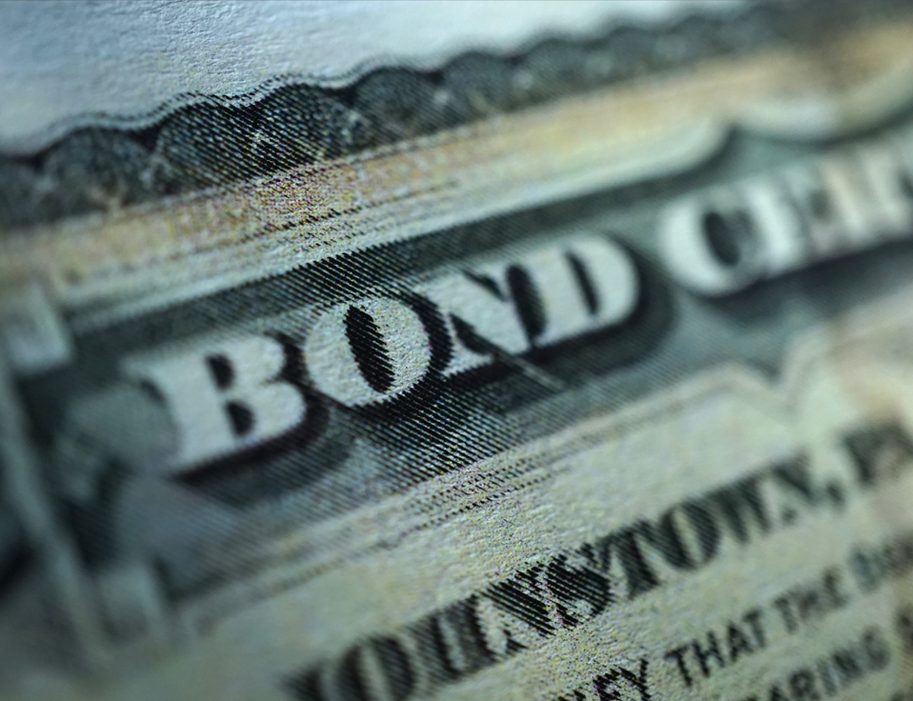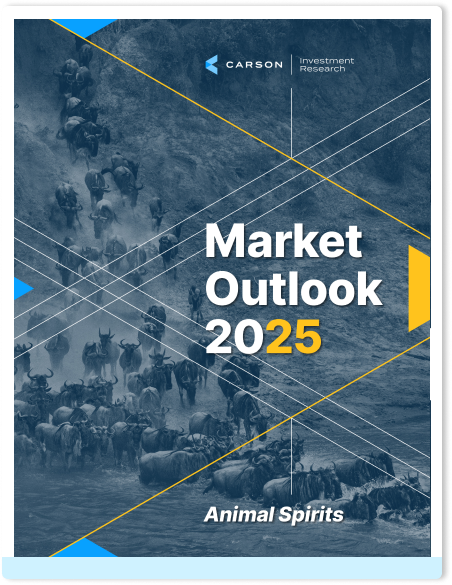Bonds have actually had a good run over the last year (for bonds). The Bloomberg US Aggregate Bond Index (“Agg”) is up 5.8% trailing year as of yesterday’s close versus 4.9% for the Bloomberg US 1-3 Month Treasury Bill Index. That’s a fair discount to the S&P 500 over the same period (9.7%), but still not bad. Year to date the numbers look a little better after a rocky start to the year for stocks: 2.5% for the Agg versus 1.5% for the Treasury Bill Index and -4.3% for the S&P 500 (but +13.7% year to date for the MSCI EAFE Index of international developed stocks!).
As I think about the next six months to a year for fixed income, here are some things on my mind.
Uncertainty Holds as True for Bonds as for Stocks
We remain in an uncertain policy environment. The impact of current tariff policy is just starting to show in the numbers. Businesses will do their best to work with and around tariffs. They are very good at that. But government-forced or induced changes to how they do business exacts a hidden toll and it’s hard to know what that will be. We also don’t know what the eventual course of tariff policy will be.
Carson VP, Global Macro Strategist Sonu Varghese provided an excellent overview of some basic scenarios for the economy and equity markets in “What Next? The Bull and the Bear Case.” Let’s take a look at Sonu’s scenarios and what it might mean for rates and bonds.
The Bull Case for the Economy
In the bull case scenario, the Trump administration removes most current and expected tariffs relative to where we are now, although we would still have meaningfully higher tariffs than where we have been historically. Call it an average tariff level on goods imports of 10 – 15%, compared to the over 20% right now (with more potentially to come) and about 2.5% before President Trump took office. While that remains damaging to businesses, there are also offsets, such as a tax bill that will lower taxes and increase deficit-financed government spending and continued deregulation.
Optimistically (but this is the optimistic scenario), inflationary pressures moderate, helped by a continued structural decline in shelter inflation. That enables the Fed to start moving rates back toward neutral, with 2 – 3 cuts in 2025. Some inflation uncertainty does persist as better growth means higher demand, including for energy. Increasing probability of something like this is likely what the market has been pricing in with the large S&P 500 rally off of April lows.
The bull case for the economy is probably the most bearish for bonds. Although inflation moderates, there’s still demand pressure limiting how far it comes down. That means Fed cutting will be modest—think some progress toward normalizing rates rather than trying to rescue a failing economy. We could see the premium demanded for holding intermediate and long maturity bonds press higher. Understanding there’s a wide potential range of outcomes, fair value for the 10-year Treasury yield is probably around 4.25 – 4.75%. But you would also see some compression in spreads, so the Agg probably wouldn’t see as much risk of an increase in yields. In this scenario, bonds wouldn’t be a disaster by any means, especially with the help of high starting yields, but you would probably do better with short-term Treasuries (“cash”).
The Bear Case for the Economy
The bear case for the economy is easier to spell out. Tariffs remain elevated and possibly even rise from current levels when the 90-day “pause” for deal making ends. New industry tariffs come into play. While fiscal stimulus via a tax bill and deregulation provide some relief, the stimulus ends up being smaller than expected as the bill goes through the Congressional meatgrinder, especially with a narrow Republican majority in the House that gives both wings of the party more leverage. Tariffs push inflation up into the mid-3% range and the Fed is handcuffed and stays on the sidelines too long. Once the negative impact on the economy is clear they begin to cut, but likely too late to avoid a recession.
This is the most bullish scenario for bonds and part of why you hold bonds. Inflation is higher initially than in the first scenario but not what we saw in 2022, and the slowdown in demand likely pulls it down from there. With inflation more moderate, enough investors see Treasuries as a safe haven that the premium demanded for holding longer term bonds stays at about the current level. Fed cutting also pulls yields lower across the curve. In this case you could see the 10-year Treasury pulling back to 3% or further with a somewhat smaller decline for the Agg due to widening credit spreads. This scenario would not play out like 2022, since the Fed simply delays lowering rates rather than raising them sharply and then cuts quickly if a recession materializes. Given that, bonds likely do what they have done for most recessions—provide ballast for a portfolio.
The Neutral Case—Muddling Through
It’s hard to call this the base case. When uncertainty is high there really is no base case. But right now “muddling through” is the most likely outcome. The tariff picture improves somewhat but high uncertainty persists, with tariff policy going through cycles of getting more aggressive or moderating in response to the economy and markets. That continues to make it very difficult for businesses to plan, but they still find a way to grow profits, although the pace slows. The rest of the world grows closer as trading partners and US firms have a more difficult time competing due to implicit government-mandated inefficiencies via forced reshoring. Some countries may also retaliate against tariffs by making it more difficult for US companies to do business there. But the positive offsets from fiscal policy and deregulation do help sustain the muddle through. Think of this as the US version of Brexit, a kind of partial US exodus (exod”us”) from the global economy, although as the world’s largest economy this is a matter of degrees.
The impact for bonds here is similar to the bull case but for different reasons. Nominal growth (including inflation) is lower due to “muddle through” real growth, although inflation is higher. This case also comes with the highest on-going inflation uncertainty. That means there may be a move toward a higher premium demanded toward holding longer term bonds. Fed behavior is likely similar to the bull case, but for different reasons. Inflation is higher than the bull case (more tariffs), but growth would be lower (more tariffs). While the Fed is pulled in both directions, you may still see 2-3 rate cuts at the end of the year.
When it comes to rates, slower nominal growth versus the bull case is offset but the higher premium for holding longer-term bonds. That keeps you in the same 4.25 – 4.75% range but for different reasons, with likely more risk to the upside for rates than in the bull case.
A Short Note on the Fed
Markets are currently pricing in about 3.5 cuts by the end of the year. But it’s important to recognize that right now that includes some probability of a large number of cuts—what we would see if there were a recession. That means that the baseline if there isn’t a recession is much lower than that—maybe more of a bias toward even just two cuts. Here’s a way to think of it. If a second half recession gives us, say, eight cuts total and the non-recessionary base case is two, that would give us a 25% chance of recession, not an unreasonable number. That’s probably a decent rough estimate of market recession probabilities, but the point really is that the market-implied point estimate doesn’t necessarily reflect just the most likely scenario, especially when there is tail risk. So in some ways it’s better to say markets expect two cuts all else equal with some tail risk of a lot more. We actually don’t think market expectations are that far off from our expectation of 2-3 if you factor out the bear case.
Investment Takeaway
Bonds have a good thing going for them right now in higher yields. If yields stay constant, the yield to maturity is the expected return you’ll get. That’s 4.65% for the Agg as of yesterday’s close. We still think stocks are solidly more attractive, but it’s a much better starting point for bonds than we’ve had for much of the last fifteen years.
The uncertain environment, however, does mean that there’s some downside risk for bonds. If we get either our bull case or neutral case for bonds, Agg returns may be modest over the next year. We don’t think they’ll be negative, but they are likely to trail Treasury bills.

Stay on Top of Market Trends
The Carson Investment Research newsletter offers up-to-date market news, analysis and insights. Subscribe today!
"*" indicates required fields
The upside for bonds is in a downside economic scenario. We still don’t think this is the base case, but if there is real economic downside, we believe it will play out very differently from 2022. A recession would likely be disinflationary with the Fed cutting rates, not raising them sharply as they did then.
That’s why we think it’s still important to hold bonds as part of a diversified portfolio, but we also think it’s important to continue to “diversify diversifiers” and look for other ways to mitigate downside risk outside of bonds. We are underweight core bonds, due to equity overweights and the use of other diversifiers, such as managed futures (a trend following strategy) and gold. But because we are underweight bonds we are not afraid to have near-benchmark levels of interest rate sensitivity overall in our bond portfolios. Core bonds may not keep up with Treasury bills if the economy continues to muddle through or better, but they’re probably not all that far behind. But if the economy faces major turbulence, we think bonds, especially Treasuries, will be attractive.
For more content by Barry Gilbert, VP, Asset Allocation Strategist click here.
7943727.1-0425-A


